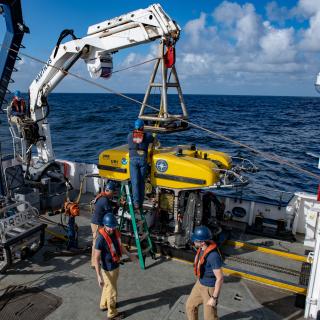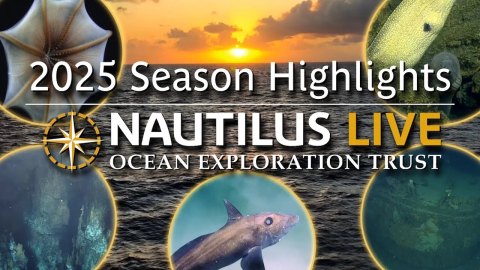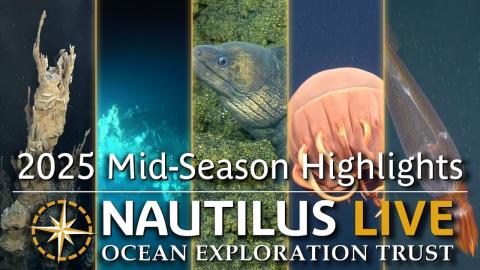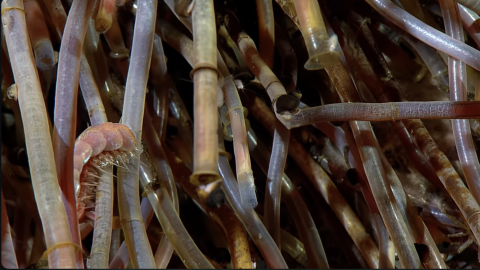Expedition Overview: Cascadia Mapping & Meteorite Hunt
On July 2, 2018, Exploration Vessel Nautilus will attempt to locate and recover fragments of a rare, large meteorite fall that was recently observed in NOAA’s Olympic Coast National Marine Sanctuary off the coast of Washington. With the Remotely Operated Vehicle (ROV) dive occurring from approximately 9am-4pm PT (weather dependent), the public will be able to watch this exploration live at www.nautiluslive.org.
On March 7, 2018, a meteorite fall was observed about 25 km off the Washington coast. Ocean Exploration Trust is working with scientists from Olympic Coast National Marine Sanctuary, NASA, and University of Washington to locate the meteorite fall. E/V Nautilus will map a 1 sq km area, and then conduct a search of the area with ROVs and recover any fragments located. If successful this will be the first known recovery of a meteorite from the ocean.
NASA Cosmic Dust Curator Dr. Marc Fries provided his analysis that indicates this fall is approximately 2 tonnes of meteorites and the largest meteorite fall he has seen in 21 years’ worth of radar data. The calculated mass for the largest meteorite(s) is 4.4 kg, which equates to a meteorite approximately 12 cm (5 in) in diameter. If found, meteorite fragments will be shipped to the Smithsonian Museum in Washington, D.C. and become part of their research collections.

Cascadia Margin & Washington Mapping
This short expedition will transit from Astoria, Oregon to Sidney, British Columbia and will include seafloor mapping with the E/V Nautilus multibeam echosounder and sub-bottom profiler.



